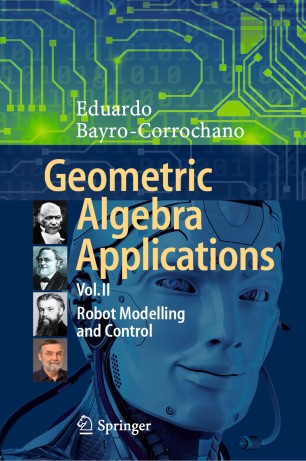

Most ebook files are in PDF format, so you can easily read them using various software such as Foxit Reader or directly on the Google Chrome browser.
Some ebook files are released by publishers in other formats such as .awz, .mobi, .epub, .fb2, etc. You may need to install specific software to read these formats on mobile/PC, such as Calibre.
Please read the tutorial at this link: https://ebookbell.com/faq
We offer FREE conversion to the popular formats you request; however, this may take some time. Therefore, right after payment, please email us, and we will try to provide the service as quickly as possible.
For some exceptional file formats or broken links (if any), please refrain from opening any disputes. Instead, email us first, and we will try to assist within a maximum of 6 hours.
EbookBell Team

5.0
30 reviewsThis book presents a unified mathematical treatment of diverse problems in the
general domain of robotics and associated fields using Clifford or geometric alge-
bra. By addressing a wide spectrum of problems in a common language, it offers
both fresh insights and new solutions that are useful to scientists and engineers
working in areas related with robotics.
It introduces non-specialists to Clifford and geometric algebra, and provides ex-
amples to help readers learn how to compute using geometric entities and geomet-
ric formulations. It also includes an in-depth study of applications of Lie group
theory, Lie algebra, spinors and versors and the algebra of incidence using theuniversal geometric algebra generated by reciprocal null cones.
Featuring a detailed study of kinematics, differential kinematics and dynamics
using geometric algebra, the book also develops Euler Lagrange and Hamiltoni-
ans equations for dynamics using conformal geometric algebra, and the recursive
Newton-Euler using screw theory in the motor algebra framework. Further, it
comprehensively explores robot modeling and nonlinear controllers, and discusses
several applications in computer vision, graphics, neurocomputing, quantum com-
puting, robotics and control engineering using the geometric algebra framework.
The book also includes over 200 exercises and tips for the development of future
computer software packages for extensive calculations in geometric algebra, and a
entire section focusing on how to write the subroutines in C++, Matlab and Maple
to carry out efficient geometric computations in the geometric algebra framework.
Lastly, it shows how program code can be optimized for real-time computations.
An essential resource for applied physicists, computer scientists, AI researchers,
roboticists and mechanical and electrical engineers, the book clarifies and demon-
strates the importance of geometric computing for building autonomous systems
to advance cognitive systems research.